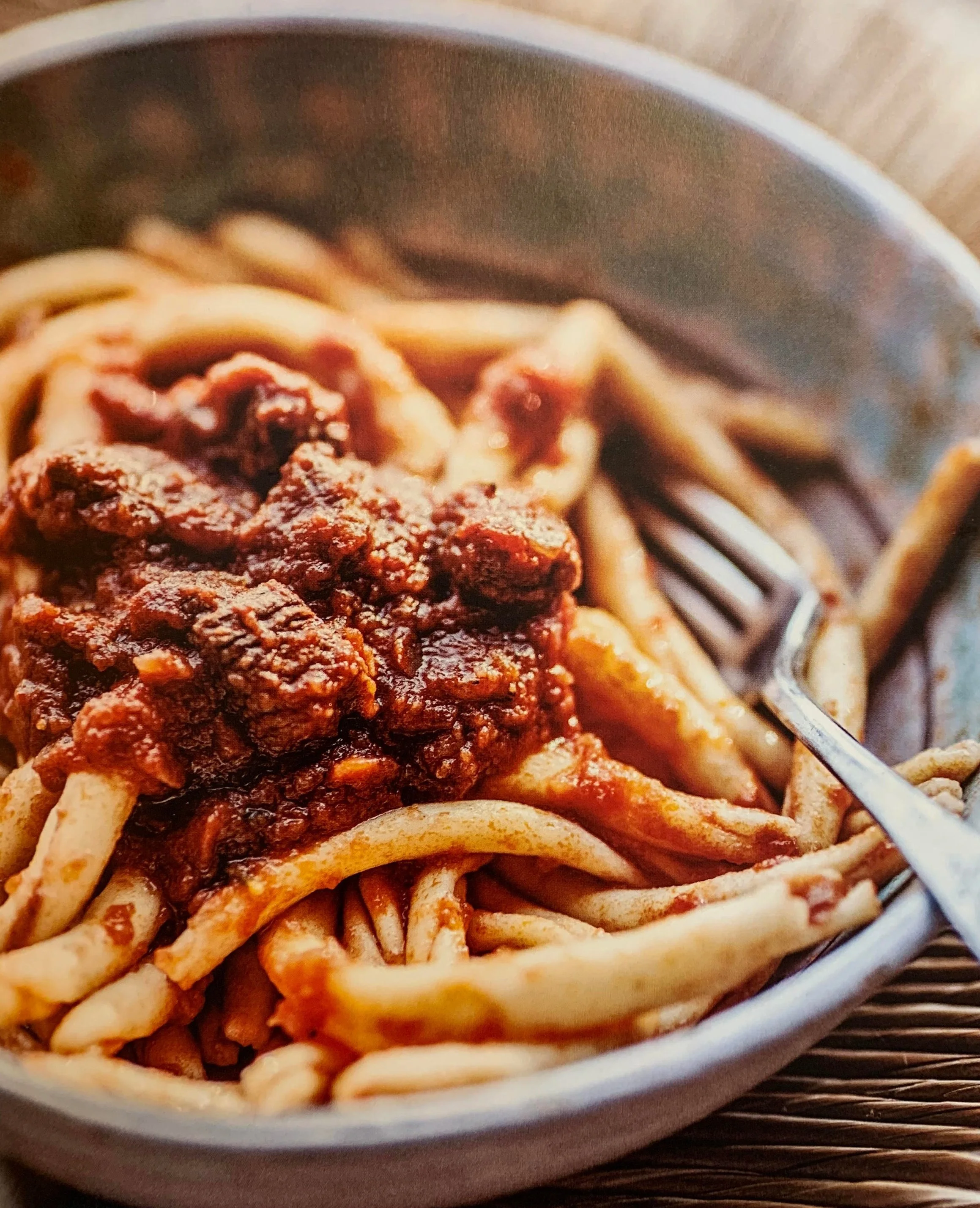Fileja. Filei. Filej.
Fileja cooked with traditional lamb ragu
Fileja (fee-lay-ah) is a Calabrian (and egg-less) pasta shape of ancient origins, which originated in the province of Vibo Valentia.
Usually 1/4 inch thick and light yellow in color. Also, goes by the names: Maccheroni al Ferretto, Filei, Filej, Mparrettati. Fileja pasta is shaped like a smoothe screw which has been elongated. Some Italians refer to them as Fusilli as well, but they are actually not at all the same as the Fusilli (small tight screw shape) we know and enjoy here in the United States.
Fileja is mostly eaten as fresh homemade pasta and prepared with only flour and water. It is vegan. It’s handcrafted using a method that has been passed down from generation to generation using knitting needles. Like many pasta shapes from Italy, they were originally produced from simple ingredients to help preserve the pasta. The addition of eggs (or dairy) would not do well at all actually when preserving fresh pasta for long periods of time. Dairy and eggs in pasta are more of a modern addition since the protein and fat from the egg gives the dough more of a silky texture which does help when wrapping the dough around the rod by hand. However, the omission of eggs (and dairy) provides more of a bite (al dente) which is the texture any respectable pasta shape should provide when served.
This is a delicious plate of Fileja mixed along with Tropea onions cooked especially for us right on the beach in the sundrenched town of Tropea.
In the video below, we used eggs when making fresh fileja on the farm for the same reason.
The farm’s chef, Gianluca, is also from the younger generation who embraces more modern interpretations, and tools when cooking up ancient Calabrian recipes.

